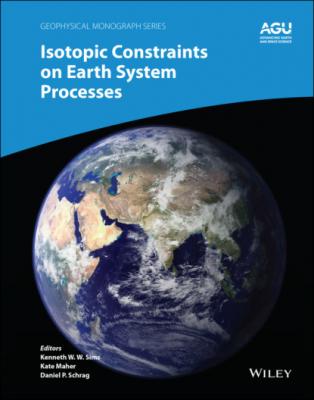Isotopic Constraints on Earth System Processes. Группа авторов
Чтение книги онлайн.
Читать онлайн книгу Isotopic Constraints on Earth System Processes - Группа авторов страница 24
 target="_blank" rel="nofollow" href="#fb3_img_img_7728f71b-0d92-5b6e-915a-3e605093c9e2.png" alt="StartFraction upper J Subscript i Baseline Over upper J Subscript j Baseline EndFraction equals left-parenthesis StartFraction Ï’ Subscript i v Baseline Over Ï’ Subscript j v Baseline EndFraction StartRoot StartFraction upper M Subscript j Baseline Over upper M Subscript i Baseline EndFraction EndRoot right-parenthesis StartFraction upper N Subscript i Baseline Over upper N Subscript j Baseline EndFraction"/>
target="_blank" rel="nofollow" href="#fb3_img_img_7728f71b-0d92-5b6e-915a-3e605093c9e2.png" alt="StartFraction upper J Subscript i Baseline Over upper J Subscript j Baseline EndFraction equals left-parenthesis StartFraction Ï’ Subscript i v Baseline Over Ï’ Subscript j v Baseline EndFraction StartRoot StartFraction upper M Subscript j Baseline Over upper M Subscript i Baseline EndFraction EndRoot right-parenthesis StartFraction upper N Subscript i Baseline Over upper N Subscript j Baseline EndFraction"/>
The quantity
1.6.2. Rayleigh Fractionation
The kinetic isotope fractionation factor α ij is the key parameter for calculating the isotopic evolution of vacuum evaporation residues as a function of the amount of the parent element evaporated when diffusion in the residue was sufficiently fast to continuously homogenize the residue. To arrive at this formulation as a form of Rayleigh fractionation consider the mass conservation equation of a uniformly distributed isotope i in a volume V bounded by a surface of area A, which is dNi /dt =−Ji A, where Ni is the total atoms of isotope i in V. A similar conservation equation applies for isotope j. Taking the ratio of the two conservation equations and using equation 1.11 for the ratio of flux gives
(1.12)
which when rearranged becomes
Integrating equation 1.13 from an initial state with isotopic abundances Ni, o and Nj, o to a later state when the abundances have become Ni and Nj gives
(1.14)
Applying the exponential function to both sides of this equation it becomes
where
1.6.3. High‐Temperature Vacuum Evaporation Experiments
The experiments involving the evaporation of CAI‐like liquids described in this section were run at the University of Chicago in a high‐temperature vacuum furnace (pressure < 10–6 Torr) that was designed and constructed by Akihiko Hashimoto (see Hashimoto, 1990, for a description of the furnace). The experimental methods for evaporating molten samples in this furnace are described in the first paper documenting high‐temperature isotopic fractionations of evaporation residues from a silicate liquid (molten fayalite) by Davis et al. (1990). For CAI evaporation experiments powders of CAI‐like CMAS composition (CaO+MgO+SiO2+Al2O3) were loaded onto small iridium wire loops (1–6 mm in diameter) that were then placed for different lengths of time in the hot spot of the vacuum furnace at temperatures between 1600°C and 1900°C and pressure less than 10–6 Torr. The objective of the evaporation experiments was to determine the evaporation coefficients γ Mg and γ Si for calculating